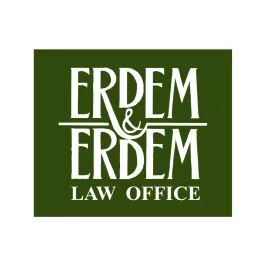Introduction
Application of soft law in international arbitration has increasingly become more significant. Mainly due to the party autonomy that is dominant in arbitration states tends to regulate arbitration laws in a limited way. This created a new market for players, besides lawmakers to codify rules. These rules that are drafted by such private players have a substantive, or are of a procedural, nature. One of the most referred to substantive soft law is the UNIDROIT Principles of International Commercial Contracts ("UNIDROIT Principles"). The UNIDROIT Principles will be referred to when an arbitral tribunal is in the phase of resolving the dispute (i.e. when the merits are examined). However, arbitration is a dispute resolution mechanism, and bears a significant amount of procedural matters, as well as soft law that aim to regulate such procedural matters, and which are arbitration specific, will be the main focus of this newsletter article.
What is soft law in international arbitration?
There is no standard definition for soft law that is mutually agreed to, in practice. However, it is possible to put forth characteristics of procedural soft law, also referred to as para-regulatory texts ("PRTs")1 in arbitration2. The main purpose of these rules are to assist and guide practitioners, and especially arbitrators, where arbitration laws and rules are deficient.
Soft law can appear as guides, rules, codes, recommendations, guidelines, notes, etc. The title of these norms mainly depends on the drafters' position and how it would like such rule to be understood.
Procedural soft law norms that are mostly referred to in arbitration are codified by arbitration-related bodies, such as the International Bar Association ("IBA"). The IBA is one of the institutions that drafts numerous PRTs. The most popular and widely used PRTs issued by the IBA are the IBA Rules on the Taking of Evidence in International Arbitration ("IBA Guidelines on Evidence"), and the IBA Guidelines on Conflicts of Interest in International Arbitration.
These norms are not considered as part of a state's domestic law and are related to issues that are not covered by arbitration rules. This is one of the reasons when the International Chamber of Commerce Rules of Arbitration ("ICC Rules") are applied, the parties and arbitrators rely on the IBA Guidelines on Evidence for the issues where the ICC Rules do not provide guidance. In other words, these procedural norms are of a complementary nature. This is also stated in the foreword of the IBA Guidelines on Evidence that "[t]he Rules are designed to be used in conjunction with, and adopted together with, institutional, ad hoc or other rules or procedures governing international arbitrations."
One of the most differing characteristics of soft law from hard law is its non-binding effect. Soft law norms are mostly non-mandatory, not binding and, therefore, do not have full legal effectiveness. This is because the drafting authority either lacks such legal capacity, intends the rules to be not fully effective, or the implementing authority is unwilling to ensure full legal capacity.
It is possible that PRTs in its preamble or foreword state its nature and way of application. In the foreword of the IBA Guidelines on Evidence, it is stated that "parties and Arbitral Tribunals may adopt the IBA Rules of Evidence, in whole or in part, at the commencement of the arbitration, or at any time thereafter. They may also vary them or use them as guidelines in developing their own procedures." It is also further stated under Article 1(1) of the IBA Guidelines of Evidence that the parties or the arbitral tribunal may decide on its application. In cases where parties decide that this would govern their proceedings, the arbitral tribunal is bound to apply them.
Impact of Soft Law
PRTs do not enjoy the same authority as arbitration laws. It would not provide a state court authority with immediate effect3. In order for PRTs to have authority, there should be a factor that gives such authority. An undisputed authority would be the agreement of the parties. It could be said that in cases where parties decide to apply a PRT in their arbitration agreement, this would bind the arbitral tribunal as the procedural law, as well as the applicable contract law.
Application of the PRTs impact state courts, arbitral institutions, and the parties. It should be noted that all of these actors must comply with the minimum standard imposed by the lex arbitri. They could use the PRT as a guide when interpreting lex arbitri, but are not bound by them.
The IBA Guidelines on Evidence has a unique position among other PRTs in practice; the arbitral tribunal tends to apply it even if parties do not decide on its application4. Applying these rules would facilitate arbitral tribunals' work; provide some assurance to the parties that the tribunal would respect parties' rights to due process. It should also be borne in mind that arbitrators and the parties should examine the necessities of each case, and then decide upon a PRT's application, since in some smaller cases with domestic features, it would impose a burden to apply complex procedural rules.
The impact of such IBA Guidelines on Evidence on state courts is, however, weak. This is explained by some scholars that procedural issues regarding evidence appear before a state court within the scope of due process. Whether an arbitral tribunal applies the IBA Guidelines on Evidence would not be considered as a breach of the fundamental principles of procedure5.
Possible Problems
In practice, it is questioned whether an arbitrator has the discretion to apply soft laws without the agreement of the parties. This may create arguments against the enforceability of an award, or a party could make a claim with regard to a fair trial.
Another important issue with regard to PRTs is whether an award could be challenged based on a PRT. In other words, could a party challenge the award by claiming that the arbitral tribunal violated a PRT. The answer to this question will be different for each PRT.
In Switzerland, the Swiss Federal Tribunal tends to refer to the IBA Guidelines on Conflicts of Interest in International Arbitrations when it examines the independence and impartiality of the arbitrators. However, non-compliance with other PRTs is almost never an issue for annulment6.
Conclusion
Procedural soft law or PRTs are seen as important sources for players in international arbitrations that should be embraced by the arbitration community. Even though there are concerns as to PRTs' legal effectiveness and legitimacy, or as to its application and the award's enforceability and annulment, procedural soft law norms are increasingly adopted by arbitrators to fulfill their duties to conduct fair and impartial proceedings. Their adoption also helps the parties to picture the frame of their proceedings and avoid unexpected procedural uncertainties.
Footnotes
1 For the purpose of this newsletter article, "soft laws" and "PRTs" will be used, interchangeably.
2 Favalli, Daniele, An Overview of Existing Para-regulatory Texts ("PRTs"): Analysis, Facts and Figures, ASA Special Series No. 37, p. 1-16; Daniel p.4: "Legal texts covering substantive law aspects may also be regarded as soft laws and may, in fact, incorporate aspects similar to PRTs when their application is not directly provided for in the contract. These legal texts are not PRTs, but binding provisions, such as the ICC Incoterms, UNIDROIT Principles of International Contracts, and the principles of European contract law."
3 Stacher, Macro, The Authority of Para-Regulatory Texts in ASA Special Series No: 37, p. 108.
4 Kaufmann-Kohler, Gabrielle, Soft Law in International Arbitration: Codification and Normativity, Journal of International Dispute Resolution, 2010, p. 14.
5 Kaufmann-Kohler, p.14.
6 Gross Balz, Stojiljković Mladen, The Challenge of an Arbitral Award on the Basis of a PRT in ASA Special Series No: 37, p. 127-138.
The content of this article is intended to provide a general guide to the subject matter. Specialist advice should be sought about your specific circumstances.

